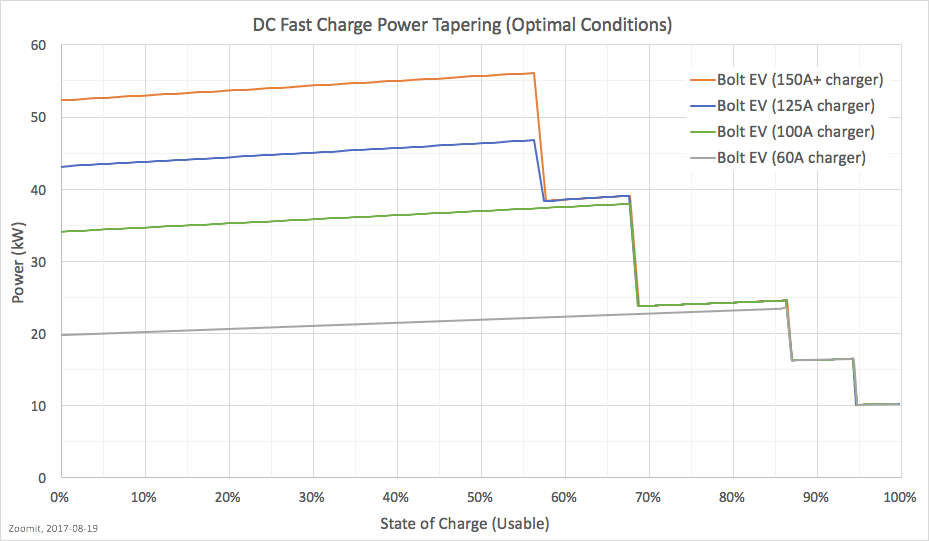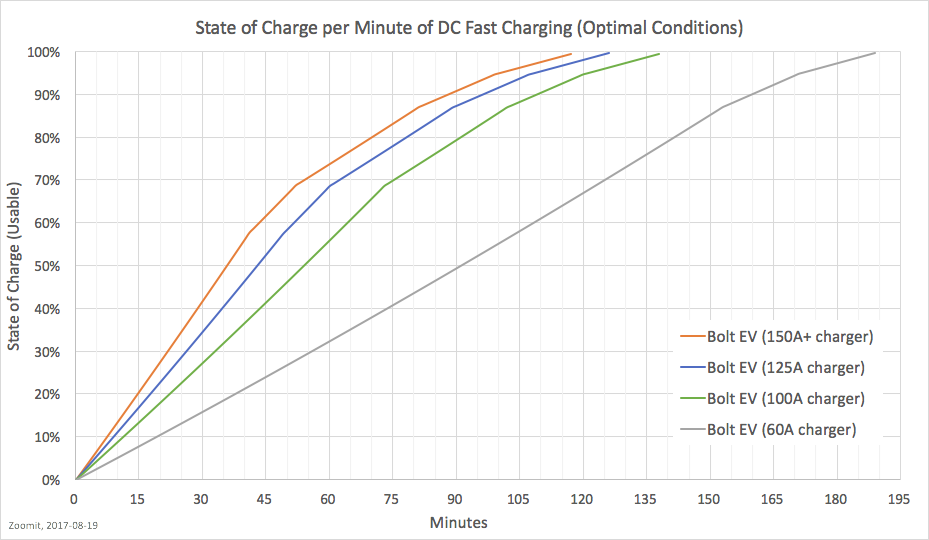The very first thing I noticed when I stepped into the 2018 Chevrolet Bolt was the gear selector. Upright, situated between the two front seats, familiar P-R-N-D-L markings. That gear selector speaks volumes about what this electric car is trying to be.
No buttons, no stalk off to the side like a Tesla or even a Toyota Prius, no rotary knob. The Bolt’s gear selector looks like something you’d find on any modern car, because that’s what everybody knows and understands, even though this single-speed electric car hardly needs it.
It’s one of many examples of how this car wants to help usher in the electric car revolution by being, well... normal. . . .
What’s Great
The Bolt’s awesome at just being a car. It was interesting to drive this nearly back-to-back with the Tesla Model 3 Performance, a car I really enjoyed spending time with. The difference in philosophy couldn’t be more stark.
The Tesla, perhaps to a fault at times, tries to reinvent the wheel even when it doesn’t need to, with its phone-app door unlocking, buttons to unlock doors, ultra-minimalist interior and many key functions relegated to a touch screen.
The Bolt takes the opposite approach. Anyone could get into this EV and figure it out. In fact, if you put a totally car agnostic person into it, they may not even realize it’s electric. Not at first, anyway. . . .
What’s Weak
The Bolt’s definitely not much to look at from the outside. I mean, it’s fine. It’s not ugly, but it’s not distinctive or visually striking in really any way. It could easily be mistaken for any other hatchback or small crossover. This tracks with the normalcy GM was going for, but I think a bit more visual flair wouldn’t have hurt . . .
The biggest letdown is the interior, which while roomy, is extremely blah. The Model 3 may be ultra bare-bones, but at least it’s a premium-feeling place to spend time. The Bolt’s economy car roots really come through on the inside. The dash is made of this hard, plasticky white textured material that looks more like styrofoam than anything else. All of it feels like a cut-rate knockoff of the BMW i3, without any of the coolness.
The seats were similarly disappointing. They’re flat in the back and bottom and feel especially thin-padded, so I never really got comfortable in them. I feel like extreme-distance road-tripping would be quite a punishment for your back. . . .
Casual Driving
Seat gripes aside, the Bolt’s a pleasant and even rewarding car to drive daily. It’s best when you think of it as a city car plus: definitely meant to be an electric commuter, but with far less anxiety about your range than the 80-mile EVs that seem to only exist to satisfy California regulations.
I drove the Bolt from my neighborhood in Brooklyn to Gizmodo Media’s offices near Union Square Park every day I had it, a commute that’s only about six miles one way. (And it usually takes 40 minutes to an hour, because New York.) I never once got concerned about range during those drives; indeed, I had to make a special trip out of the city to really use up some of that 238-mile full charge I was given.
Even in the city, it’s pretty fun to drive. It has enough juice that you can pass and dart between other cars when you need to with ease, and it’s small enough that it’s remarkably easy to park. The ride quality’s great, and it’s so quiet inside that it’s actually quite calming to operate. A great insulator from the chaos and noise of the city for sure.
I enjoy engine sounds as much as the next speed freak, but the Bolt’s the easiest car to have a room-volume conversation in I’ve experienced to date. . . .
Value
The Bolt starts at $36,620. Our tester was a Bolt Premier, the better of the two trims available, which starts at $41,780. The Premier includes leather seats and a variety of lane change and parking aids.
With options like that sweet roof rack, our car came to $43,905. All of that is before the $7,500 EV tax credit, which would bring its “true” price to $36,405.
Here’s the thing: At that price, about the average new car transaction price these days, the Bolt’s a solid deal. But with the bland seats, the econo-hatch looks and the decidedly not premium interior, the Bolt is not a mid-$40,000 car. It just isn’t. If you want one of these, do yourself a favor and get it before the credit expires.
When it does, Chevrolet is going to have to drop the price, make it more premium somehow or shift over to some electric crossover SUV thing that’s similar under the skin but can justify the steeper price, the way all crossovers seem to do.
Value
The Bolt starts at $36,620. Our tester was a Bolt Premier, the better of the two trims available, which starts at $41,780. The Premier includes leather seats and a variety of lane change and parking aids.
With options like that sweet roof rack, our car came to $43,905. All of that is before the $7,500 EV tax credit, which would bring its “true” price to $36,405.
Here’s the thing: At that price, about the average new car transaction price these days, the Bolt’s a solid deal. But with the bland seats, the econo-hatch looks and the decidedly not premium interior, the Bolt is not a mid-$40,000 car. It just isn’t. If you want one of these, do yourself a favor and get it before the credit expires.
When it does, Chevrolet is going to have to drop the price, make it more premium somehow or shift over to some electric crossover SUV thing that’s similar under the skin but can justify the steeper price, the way all crossovers seem to do.
Verdict
In so many ways, the Bolt is a win. It’s priced well (as long as that EV credit exists), it’s fun enough, it’s practical and it’s easy to live with. You almost can’t ask for a better way to ease people into electric cars. Yes, charging was a pain, but I would have sorted it eventually, and most drivers won’t have to deal with New York City headaches like I did.
I was kind of surprised that I came to many of the same conclusions about the Bolt that my colleague Kristen Lee did about the Tesla Model 3 Long Range she tested. (I was on vacation when she had that car, and I did not get to drive it.) Even if the Model 3 does some radical things with its design and interior, at the end of the day it’s trying to drive like a normal, range-anxiety-free car would, and the Bolt is attempting the exact same thing. I think that normal-ness is what the EV market needs most right now.
And like Kristen, I’m not ready to have this as my only car, and not just for charging and range reasons. I’d miss engine noise, shifting gears myself and all the other irrational things I love about internal combustion cars. But there was something rewarding, even tranquil, about driving around in something I knew wasn’t contributing to air pollution, gas consumption and the climate shifts likely to finish us all of someday.
Would the Bolt make a good daily alongside some old, weird, fun and terrible Jalop-mobile? You could do a lot worse than that combo.


